The roar of a fighter jet breaking the sound barrier is a sound that encapsulates power and cutting-edge technology. Fighter jets are engineered for aerial combat and multi-role warfare, demanding both incredible speed and maneuverability. For decades, the pursuit of speed has driven innovation in aviation, pushing pilots and engineers to create machines that not only break the sound barrier but also reach astonishing velocities.
This article delves into the world of high-speed military aviation, focusing on the question: How Fast Does A Fighter Jet Fly? We will explore the average speeds, the concept of Mach numbers, and showcase a ranking of the fastest military aircraft ever developed. It’s important to note that this ranking is based purely on maximum speed, disregarding factors such as service history, operational capabilities, or age. Some of the aircraft featured were experimental marvels, pushing the boundaries of what’s aerodynamically possible.
Understanding Fighter Jet Speed: Average and Mach Numbers
Modern fighter jets are marvels of engineering, with many capable of achieving speeds of Mach 2. This translates to approximately 1,535 miles per hour (mph) at higher altitudes. It’s crucial to understand that these top speeds are generally achieved at optimal altitudes, typically above 30,000 feet (9,000 meters), where air resistance is significantly lower.
To better understand the speed of these aircraft, we use Mach numbers. Mach numbers represent the ratio of an object’s speed to the speed of sound. Mach 1 is roughly equivalent to 767 mph at sea level, though this speed can vary slightly with air temperature and altitude. Exceeding Mach 1 means breaking the sound barrier, a feat that was once considered an insurmountable challenge. While many contemporary fighter jets can comfortably reach Mach 2 or even surpass it, some exceptional aircraft have pushed the limits to Mach 3 and beyond.
Top 15 Fastest Military Aircraft in the World
Drawing on data from sources like BBC Science Focus, we present a ranking of the 15 fastest military aircraft ever created, starting with the absolute speed champion.
1. NASA X-43
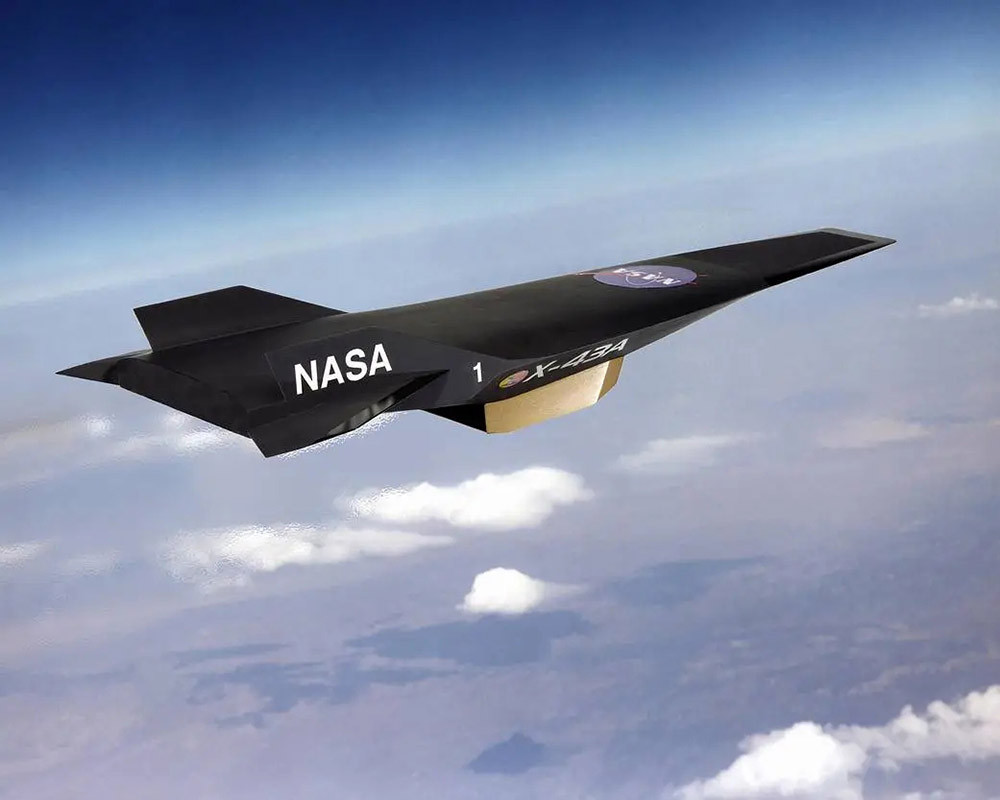 NASA X-43 experimental aircraft
NASA X-43 experimental aircraft
The NASA X-43 holds the undisputed record for the fastest aircraft ever built, achieving an incredible speed of Mach 9.6, or approximately 7,366 mph. This experimental, unmanned aircraft was designed to test scramjet technology, an advanced form of air-breathing jet engine that allows for hypersonic flight.
Three X-43 aircraft were constructed as part of NASA’s Hyper-X program. In test flights, two of these vehicles reached their target speed for a brief ten seconds before gliding unpowered for ten minutes and intentionally crashing into the Pacific Ocean. Sadly, one X-43 was lost during a 2001 test flight. Launched from a B-52 bomber to reach operational altitude, the X-43 represents a pinnacle of speed achievement, although it was purely experimental and never intended for military service.
2. NASA/USAF X-15
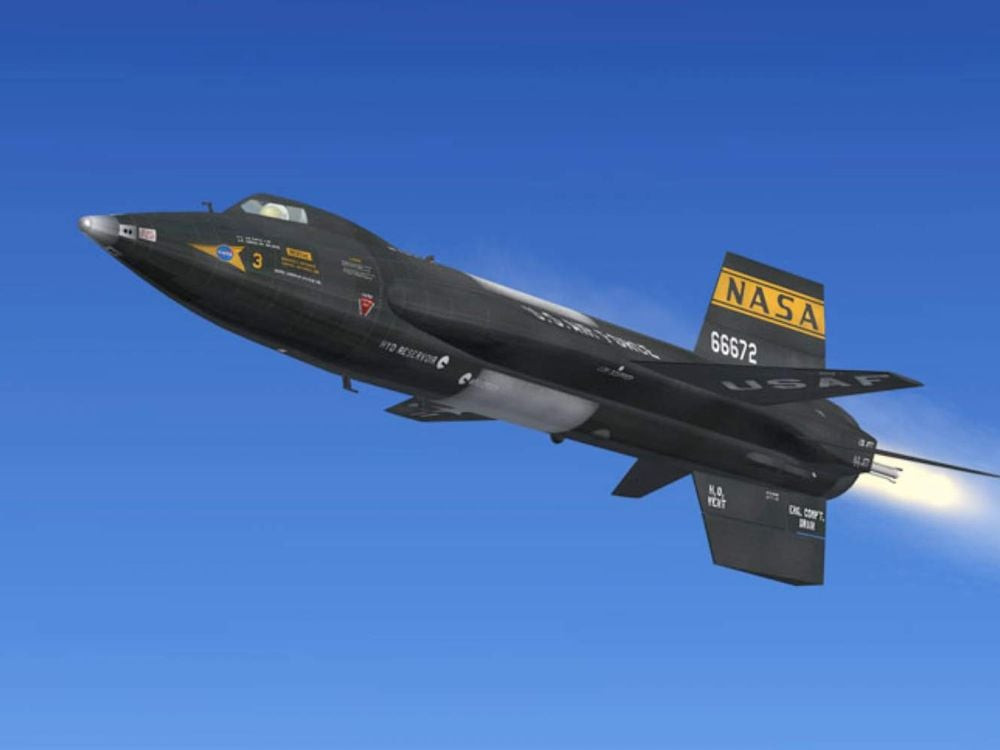 NASA/USAF X-15 rocket-powered aircraft
NASA/USAF X-15 rocket-powered aircraft
The NASA/USAF X-15 is another experimental rocket-powered aircraft, achieving a maximum speed of Mach 6.72, or around 4,520 mph. A joint project between NASA and the U.S. Air Force, the X-15 was designed to explore the challenges of hypersonic flight at the edge of space. While not a fighter jet in the traditional sense, its rocket-based propulsion pushed speed boundaries far beyond conventional jet engines, paving the way for future aerospace advancements.
Only three X-15 aircraft were built in the 1960s. They were air-launched from modified Boeing B-52 bombers. Remarkably, eight of the twelve pilots who flew the X-15 exceeded an altitude of 50 miles (80 kilometers), meeting the U.S. Air Force definition of spaceflight and earning them astronaut wings.
3. Lockheed SR-71 Blackbird
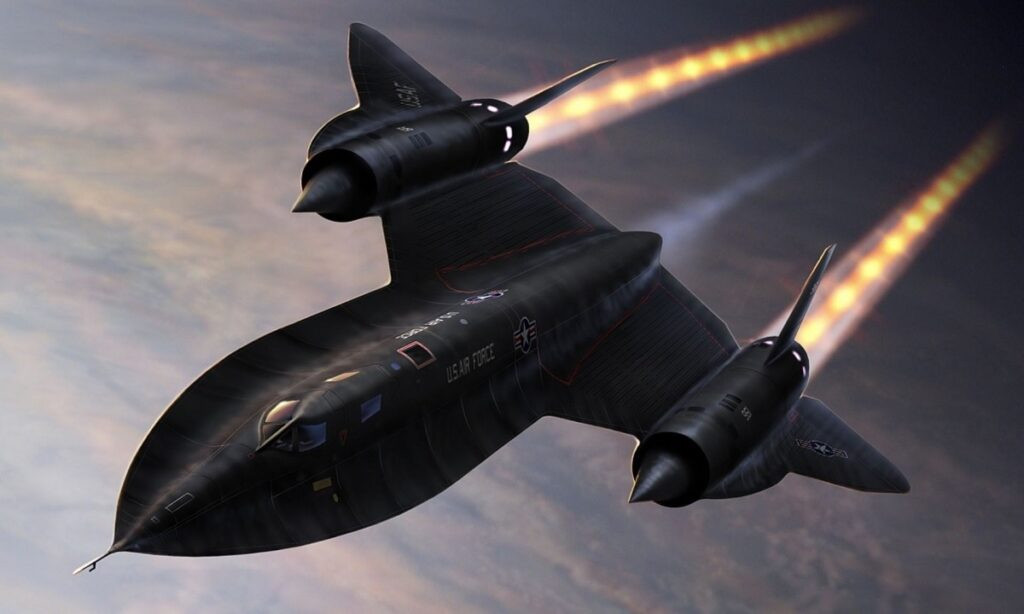 Lockheed SR-71 Blackbird reconnaissance aircraft
Lockheed SR-71 Blackbird reconnaissance aircraft
The Lockheed SR-71 Blackbird is an iconic reconnaissance aircraft capable of speeds exceeding Mach 3.4, or over 2,500 mph. While significantly slower than the X-15, the SR-71 remains one of only a handful of aircraft ever to surpass Mach 3.0 in sustained flight. Considering the X-15’s rocket-plane nature, the SR-71 is arguably the fastest jet-engine powered aircraft ever to enter operational service.
Designed for high-altitude, high-speed reconnaissance missions during the Cold War, the SR-71 was operated by both NASA and the USAF. NASA retired its final SR-71 in 1999, as satellite technology became more effective for many reconnaissance tasks. However, the Blackbird’s legacy as a speed and engineering marvel endures.
4. Lockheed YF-12
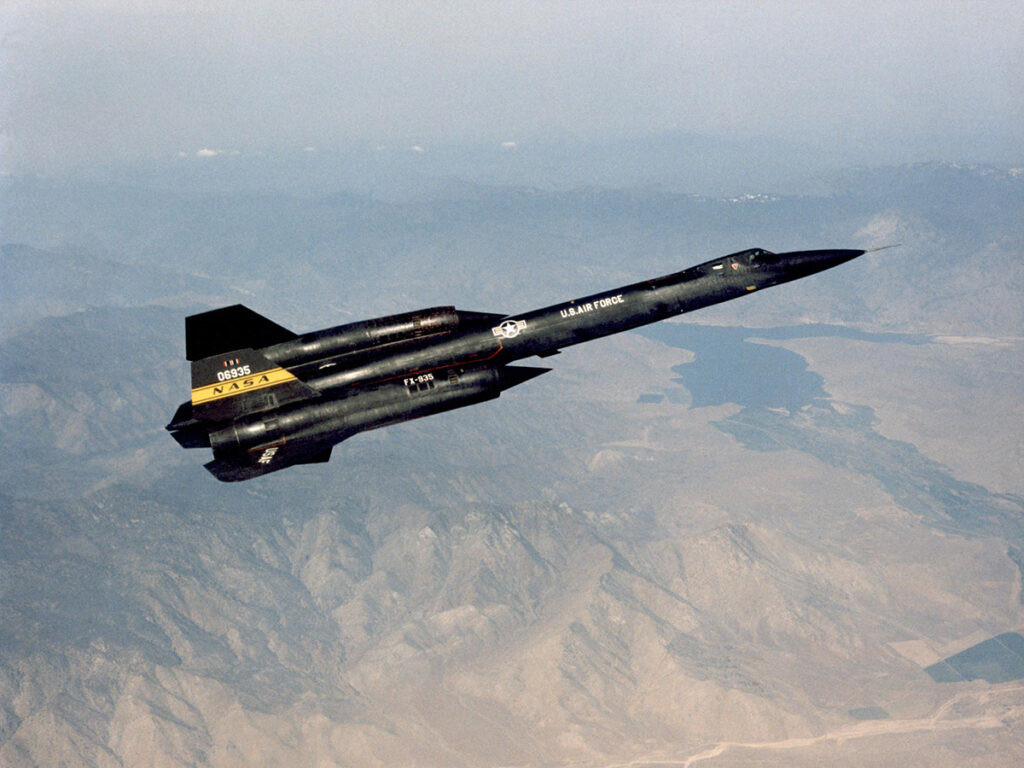 Lockheed YF-12 interceptor aircraft prototype
Lockheed YF-12 interceptor aircraft prototype
The Lockheed YF-12 was the prototype interceptor that directly led to the SR-71 Blackbird. Designed as a potential replacement for the F-106 interceptor, the YF-12 was developed in the late 1960s.
During its nine years of service, the YF-12 flew fewer than 300 times, accumulating around 450 flight hours. It was recognized as one of the fastest and highest-flying aircraft of its time, setting a height record of 80,258 feet and achieving a maximum speed of 2,275 mph. However, these records were later surpassed by its successor, the SR-71.
5. MiG-25 Foxbat
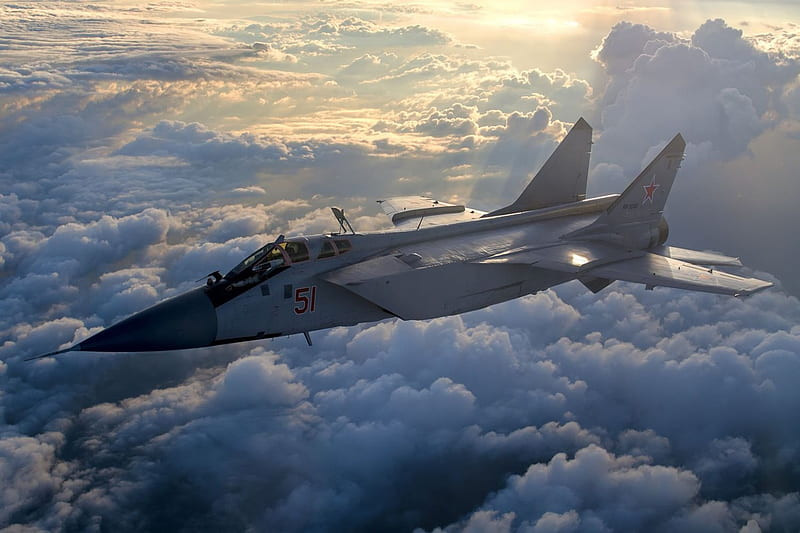 MiG-25 Foxbat high-speed interceptor
MiG-25 Foxbat high-speed interceptor
The MiG-25 Foxbat is a Soviet-era interceptor that could reach a top speed of Mach 3.2, or 2,190 mph. While this speed wasn’t ultimately deemed sufficient by the Soviet Union for their evolving strategic needs, the MiG-25 remains one of the fastest operational military jets ever built and is still in limited service today. Developed in the 1960s, it held the title of the world’s fastest operational fighter jet for many years.
Even with the introduction of more modern aircraft like the MiG-31 and MiG-29, the MiG-25 continues to be used by some air forces, including Libya and Syria, primarily for reconnaissance roles. Production ceased, but approximately 1,200 MiG-25s were manufactured, reflecting its significance during the Cold War.
6. Bell X-2 Starbuster
 Bell X-2 Starbuster research aircraft
Bell X-2 Starbuster research aircraft
The Bell X-2 Starbuster, like the X-15, was a rocket-powered research aircraft developed in the 1940s and 1950s. It was designed to explore flight characteristics in the Mach 2-3 range and achieved a speed of Mach 3.2, equivalent to 2,094 mph.
The X-2’s primary focus was investigating the aerodynamic heating challenges encountered at such high speeds. Built to fly faster and higher than its predecessor, the Bell X-1 (the first aircraft to break the sound barrier), the X-2 provided crucial data for future supersonic and hypersonic aircraft development.
7. XB-70 Valkyrie
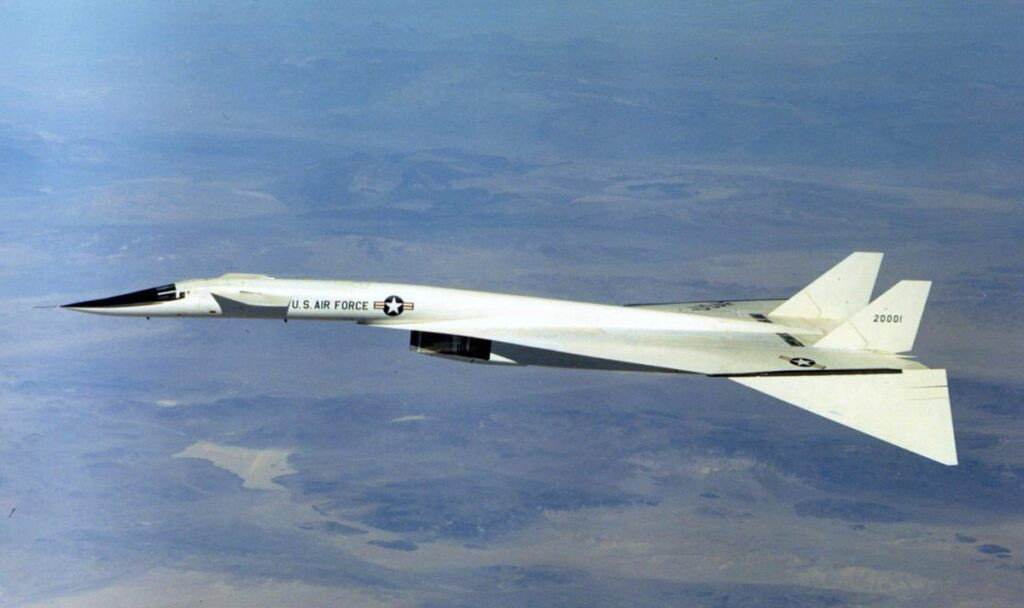 XB-70 Valkyrie strategic bomber
XB-70 Valkyrie strategic bomber
The XB-70 Valkyrie was a planned strategic bomber designed to fly at Mach 3.02, or 2,056 mph. A technological marvel of its time, the XB-70 featured a striking delta-wing design and was powered by six powerful engines.
At its intended altitude and speed, the B-70 was initially believed to be invulnerable to interceptor aircraft and difficult for radar to detect. However, advancements in surface-to-air missiles rendered the XB-70 vulnerable, and the USAF shifted to lower-altitude penetration tactics. Ultimately, the B-52 bomber, which the XB-70 was intended to replace, proved more versatile, and the XB-70 program was canceled.
8. MiG-31 Foxhound
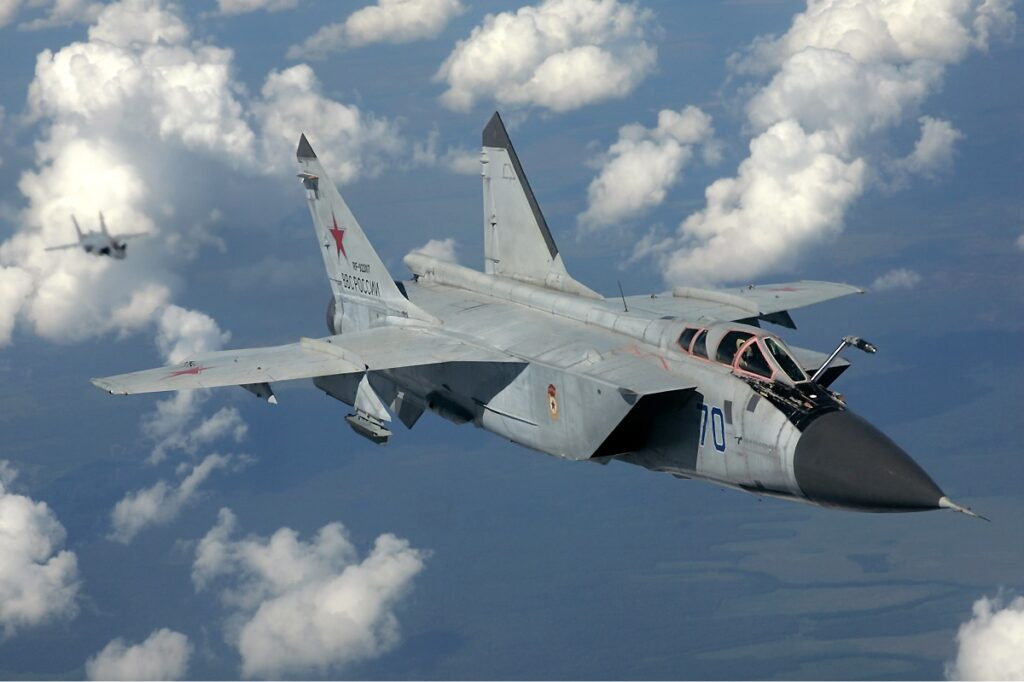 MiG-31 Foxhound supersonic interceptor
MiG-31 Foxhound supersonic interceptor
The MiG-31 Foxhound is a more modern supersonic interceptor, developed in the 1970s as a successor to the MiG-25 Foxbat. It remains in service with the Russian Aerospace Forces today.
While its official top speed is Mach 2.83 (1,864 mph), the MiG-31 is theoretically capable of reaching Mach 3.2, albeit with increased risk of engine damage. Though slightly slower than the MiG-25, the MiG-31 was designed to be more maneuverable and easier to operate, representing an evolution in Soviet interceptor design.
9. F-15 Eagle
The American F-15 Eagle is a highly successful air superiority fighter capable of reaching a maximum speed of Mach 2.5, or 1,650 mph. With numerous variants, including the F-15E Strike Eagle and F-15N Sea Eagle, the F-15 has served diverse roles and remains in service with multiple air forces globally.
Introduced in the 1970s, the F-15 remains one of the fastest and most versatile fighter jets in the world. The initial design requirement called for Mach 3.0 speeds, but this was relaxed to Mach 2.5 to reduce costs and complexity.
10. F-111 Aardvark
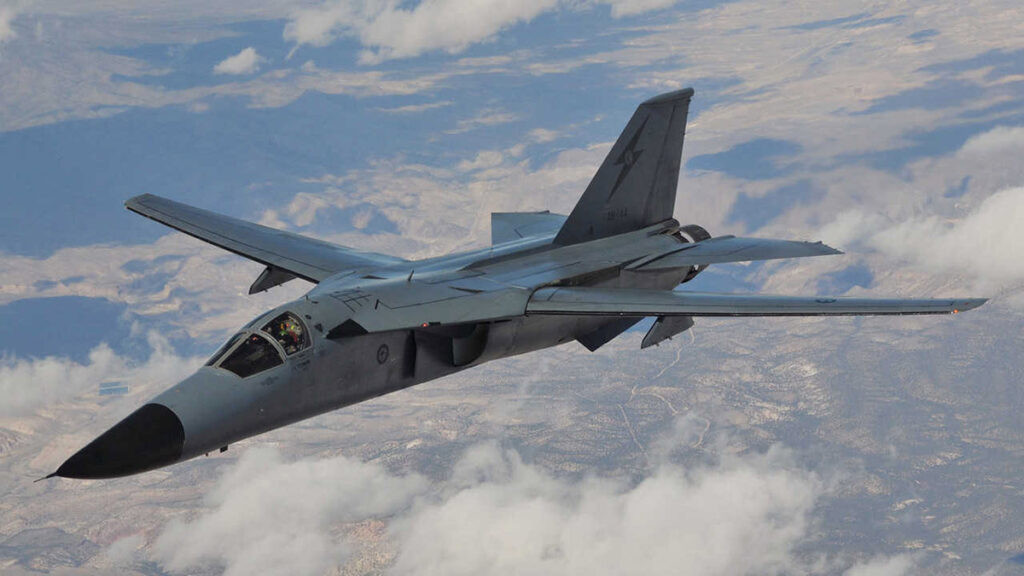 F-111 Aardvark tactical strike aircraft
F-111 Aardvark tactical strike aircraft
The General Dynamics F-111 Aardvark was a supersonic, medium-range tactical strike aircraft introduced in the late 1960s. Primarily used as a strategic bomber and fighter-bomber, the F-111 could reach speeds up to Mach 2.5.
During Operation Desert Storm in 1991, F-111s demonstrated a superior mission success rate compared to other US attack aircraft, achieving 3.2 successful strike sorties for every unsuccessful one. Despite its effectiveness, the F-111 Aardvark was eventually retired from service, outperforming some more modern strike aircraft in its final years.
11. Su-27 Flanker
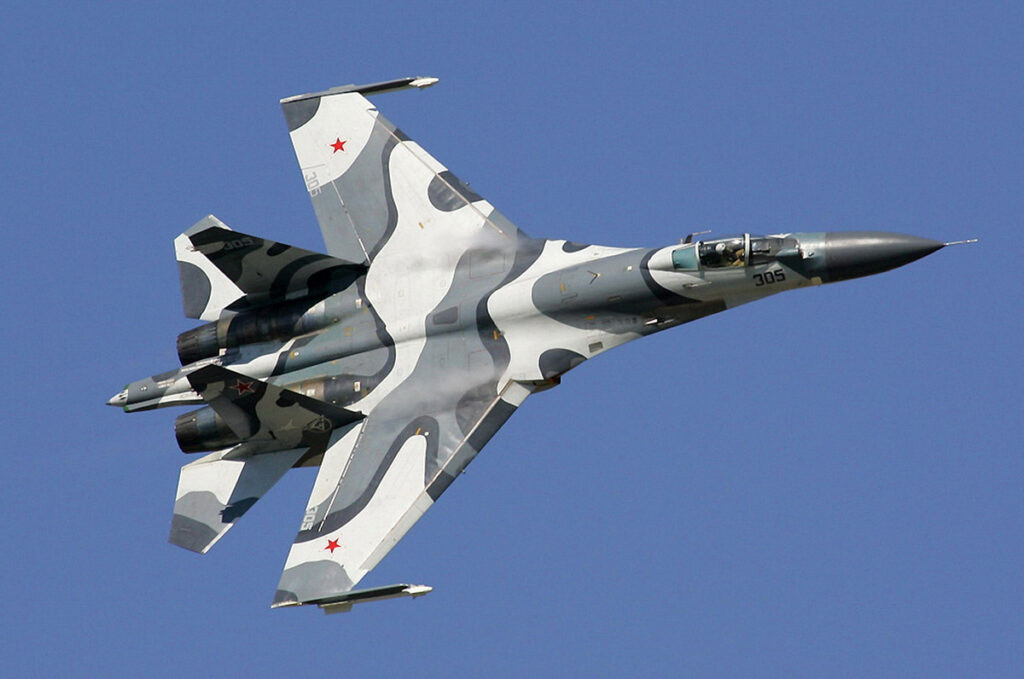 Su-27 Flanker air superiority fighter
Su-27 Flanker air superiority fighter
The Su-27 Flanker is another example of Soviet high-speed military aircraft design. Optimized for air superiority, the Flanker has a maximum speed of Mach 2.35, or 1,553 mph, making it a formidable opponent in aerial combat.
With powerful engines and advanced avionics, the Su-27, when flown by skilled pilots, is a highly effective and lethal weapon system. It highlights the Soviet Union’s commitment to pushing the boundaries of military aviation engineering.
12. Grumman F-14 Tomcat
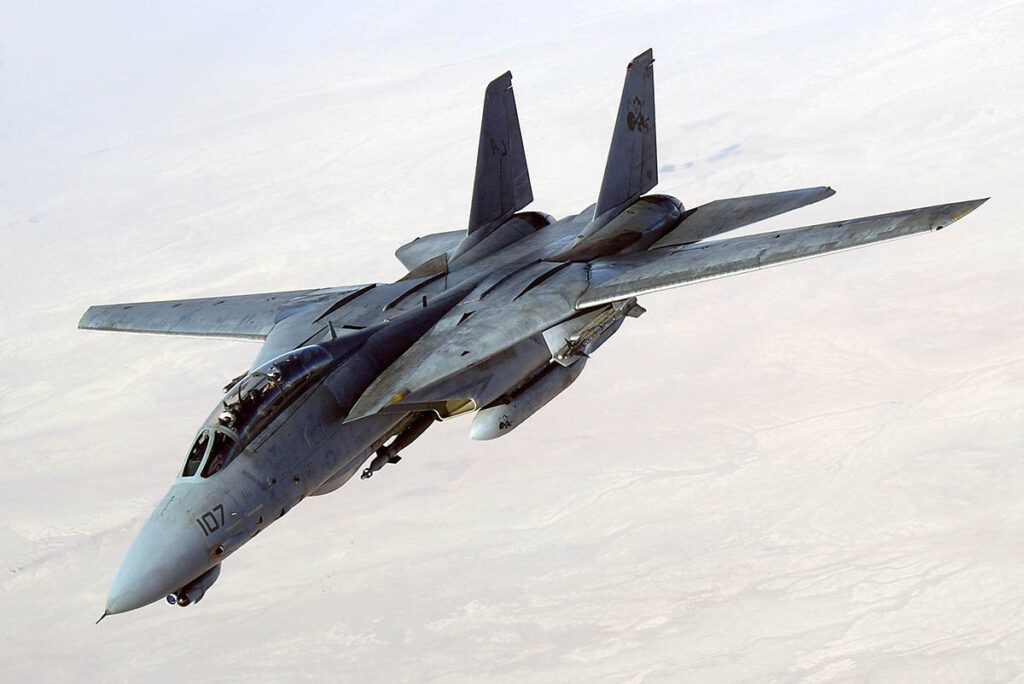 Grumman F-14 Tomcat naval fighter jet
Grumman F-14 Tomcat naval fighter jet
The Grumman F-14 Tomcat is a twin-engine, supersonic fighter jet developed for the US Navy. In service from the 1970s to the early 2000s, the F-14 Tomcat became an iconic symbol of naval air power. Capable of engaging and intercepting enemy aircraft at high speeds, the Tomcat had a top speed of Mach 2.3, or 1,544 mph.
13. MiG-29 Fulcrum
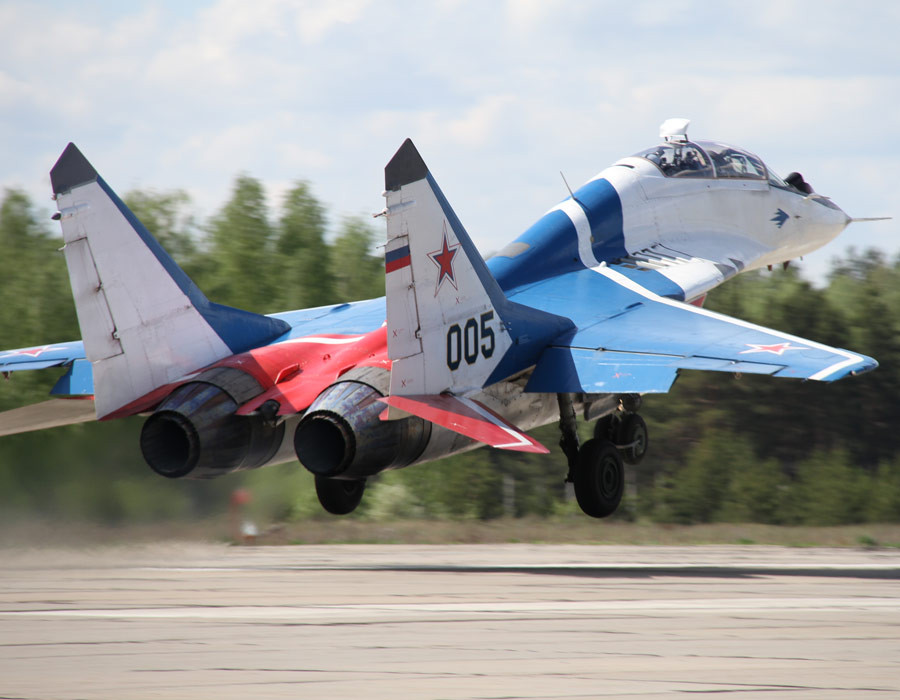 MiG-29 Fulcrum multirole fighter jet
MiG-29 Fulcrum multirole fighter jet
Another product of Soviet innovation, the MiG-29 Fulcrum, is renowned for its speed and agility in close-quarters combat. Designed as an air-to-air combat fighter, the Fulcrum is capable of rapid, tight turns and has a maximum speed of Mach 2.3, or 1,520 mph. Its versatility and speed have made it a popular choice for air forces worldwide, continuing the legacy of Soviet aircraft design.
14. Lockheed Martin F-22 Raptor
The Lockheed Martin F-22 Raptor is the only stealth aircraft on this list. Famously, only around 200 Raptors were ever produced, and the type has never been exported. The Raptor is capable of outmaneuvering and outrunning virtually any adversary, boasting a top speed exceeding Mach 2.25, or 1,500 mph. Its supercruise capability allows for sustained supersonic flight without using fuel-guzzling afterburners, enhancing both speed and operational range.
15. McDonnell Douglas F-4 Phantom II
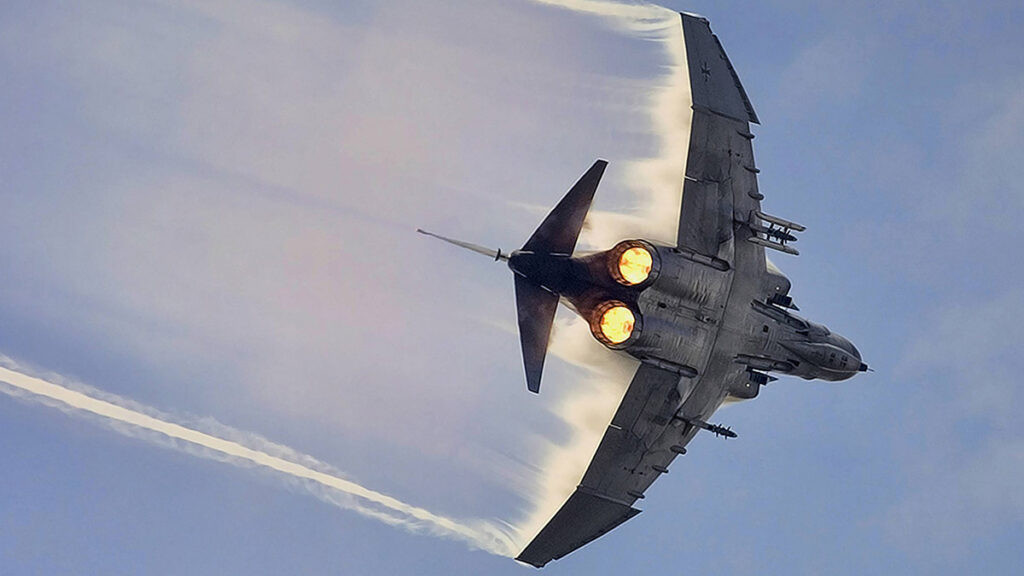 McDonnell Douglas F-4 Phantom II fighter-bomber
McDonnell Douglas F-4 Phantom II fighter-bomber
Looking back at Cold War era aircraft, the F-4 Phantom II is a classic example of a speed-focused combat jet. Introduced in the 1960s, the Phantom II was exceptionally fast for its time, reaching Mach 2.23, or 1,470 mph at 40,000 feet. The F-4’s aerodynamic design and powerful General Electric J79 engines made it a mainstay of Western air forces for decades.
Factors Influencing Fighter Jet Speed
Several factors contribute to how fast a fighter jet can fly:
- Engine Power: The most critical factor is the thrust produced by the jet engines. More powerful engines enable higher speeds. Afterburners, which inject extra fuel into the engine exhaust, can provide a significant boost in thrust for short periods, allowing jets to reach their maximum speeds.
- Aerodynamics: The shape and design of the aircraft are crucial for minimizing air resistance (drag). Sleek, streamlined designs with swept wings are common features of high-speed fighter jets.
- Altitude: Air density decreases with altitude. Thinner air offers less resistance, allowing jets to achieve higher speeds at higher altitudes. Maximum speeds are typically quoted for high altitudes.
- Weight: A lighter aircraft will generally be able to accelerate faster and reach higher speeds than a heavier one, assuming engine power is constant.
- Atmospheric Conditions: Air temperature and humidity can slightly affect the speed of sound and thus the Mach number achieved by a jet.
Frequently Asked Questions
Have We Gone Mach 10?
While human-crewed aircraft have not reached Mach 10, unmanned experimental vehicles have. As mentioned earlier, the NASA X-43 achieved Mach 9.6. No human-carrying aircraft has been tested at or above Mach 10. However, spacecraft re-entering the atmosphere can experience speeds far exceeding Mach 10 due to gravitational acceleration.
Can A Fighter Jet Outrun A Bullet?
No, generally not. Most fighter jets fly at speeds significantly slower than bullets. For example, an F-15 flying at Mach 2.5 reaches approximately 2,500 feet per second (FPS), while a standard 5.56x45mm NATO round travels at over 3,000 FPS. The SR-71 Blackbird, with a potential speed slightly above 3,200 FPS, is theoretically the only aircraft that might outrun some bullets, but it was unarmed and not designed for air-to-air combat.
Which Country Has The Best Fighter Jets?
Determining the “best” fighter jet is subjective and depends on the criteria used. Historically, the US, Russia, and China have been leading manufacturers of advanced fighter aircraft. Current top contenders for the title of “best” include the American F-22 Raptor and F-35 Lightning II, the Russian Su-35, and the Chinese J-20, each with unique strengths and capabilities.
The Need For Speed: Why Fighter Jet Velocity Matters
Speed is a critical attribute for a fighter jet, providing several key advantages in aerial combat and mission effectiveness:
- Interception: High speed allows fighter jets to rapidly intercept enemy aircraft or incoming threats, reducing reaction times and increasing defensive capabilities.
- Evasion: Speed enables fighter jets to evade enemy missiles and gunfire, enhancing survivability in hostile environments.
- Maneuverability: While not directly speed itself, high speed contributes to the energy and momentum needed for aggressive maneuvers in dogfights, allowing for quicker positioning and offensive opportunities.
- Reconnaissance: For reconnaissance aircraft like the SR-71, speed is paramount for quickly covering vast distances and minimizing the risk of detection and interception.
- Strike Missions: Speed can reduce the time spent in enemy airspace during strike missions, minimizing exposure to air defenses.
In essence, speed translates to a significant tactical advantage for fighter jets. The ongoing pursuit of faster, more capable aircraft reflects the enduring importance of velocity in aerial warfare and military aviation technology.
The Bottom Line
The NASA X-43 holds the record as the fastest aircraft ever flown, reaching an astonishing Mach 9.6. Among military jets still in service, the MiG-25 Foxbat leads in terms of sheer speed. However, speed is just one of many critical factors in fighter jet design and combat effectiveness.
For fighter pilots, speed is not merely about bragging rights; it’s about survival and mission success. The relentless drive to build faster and more capable combat aircraft will undoubtedly continue to shape the future of aviation and aerial warfare.
